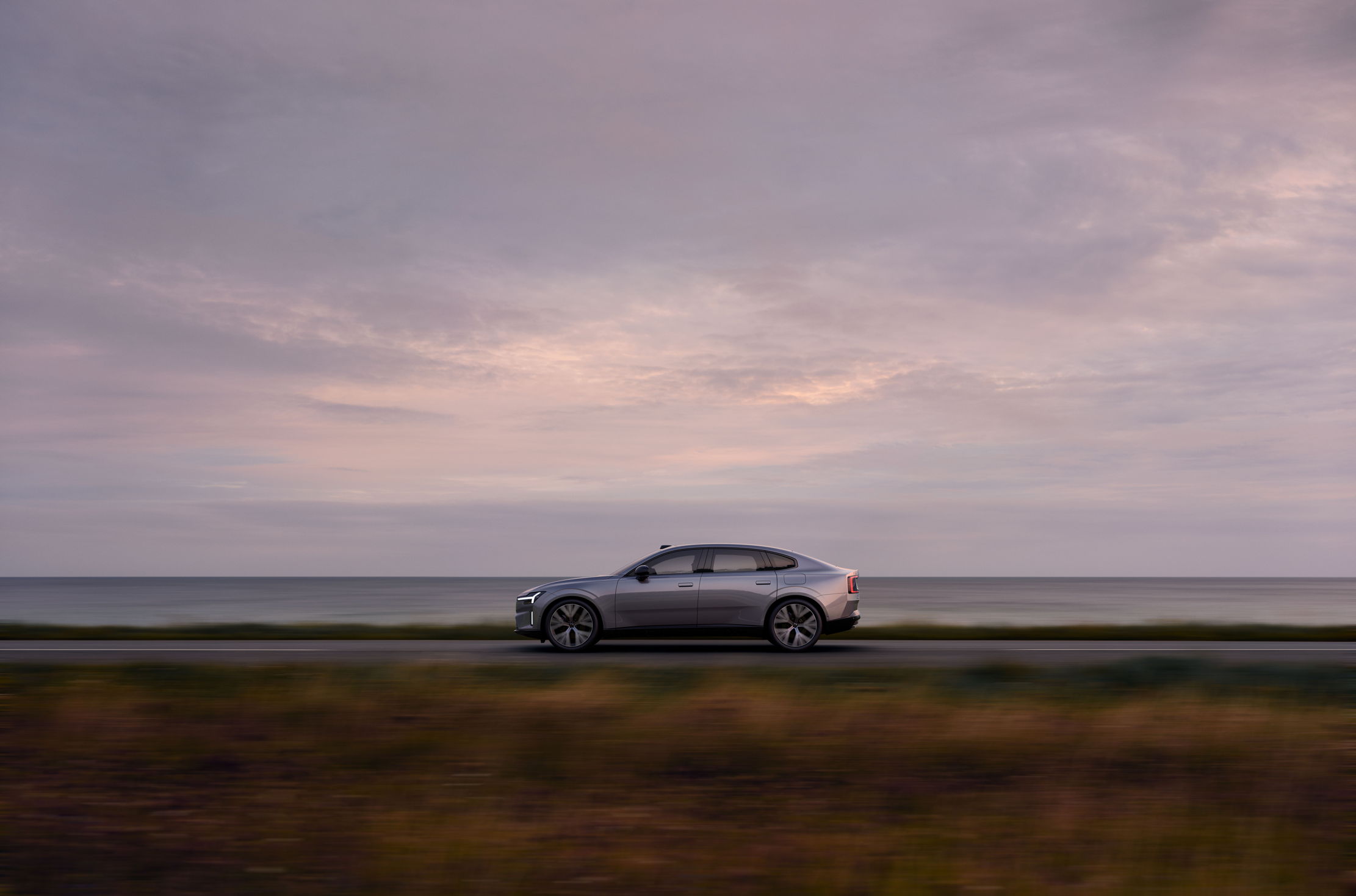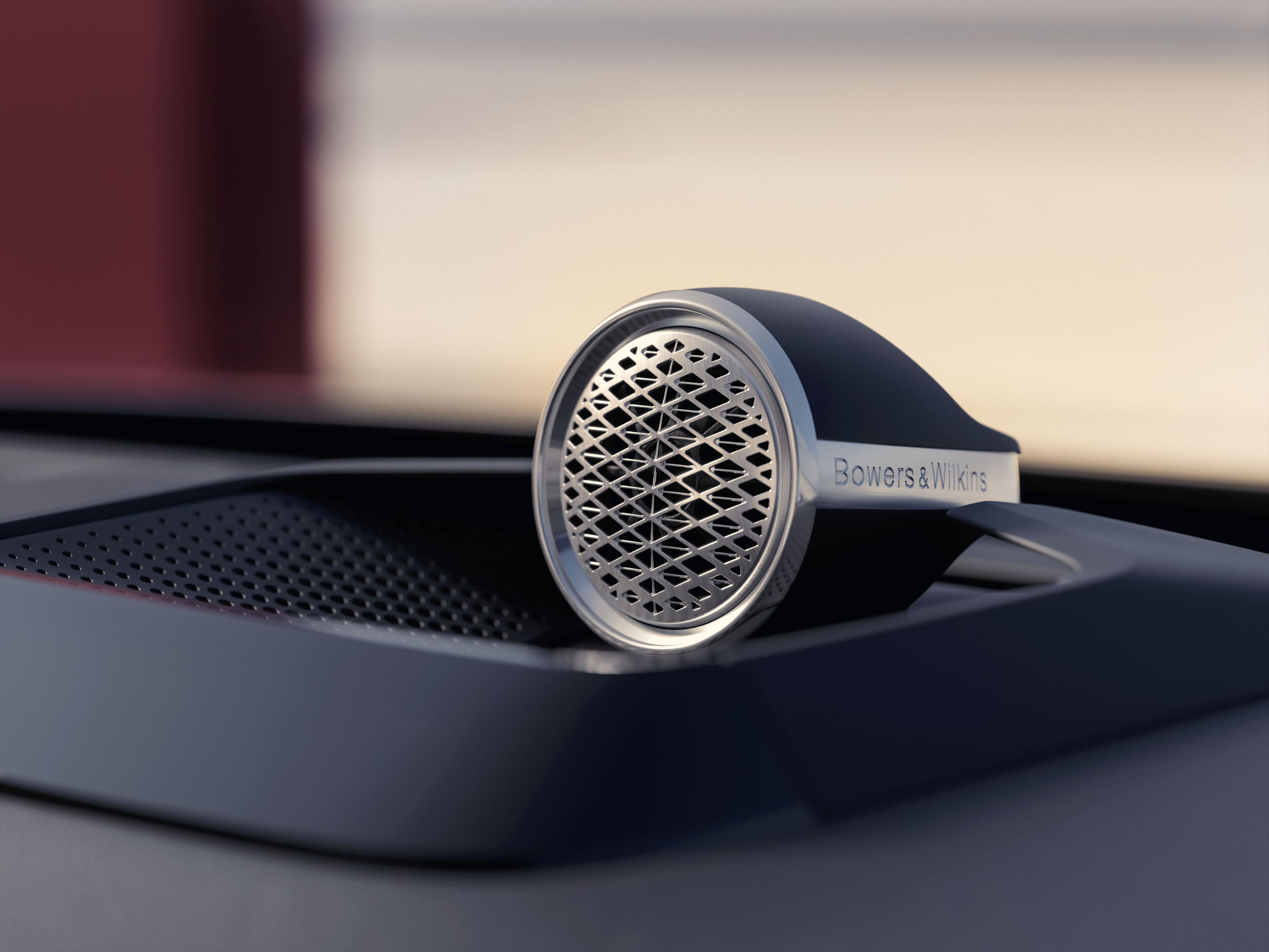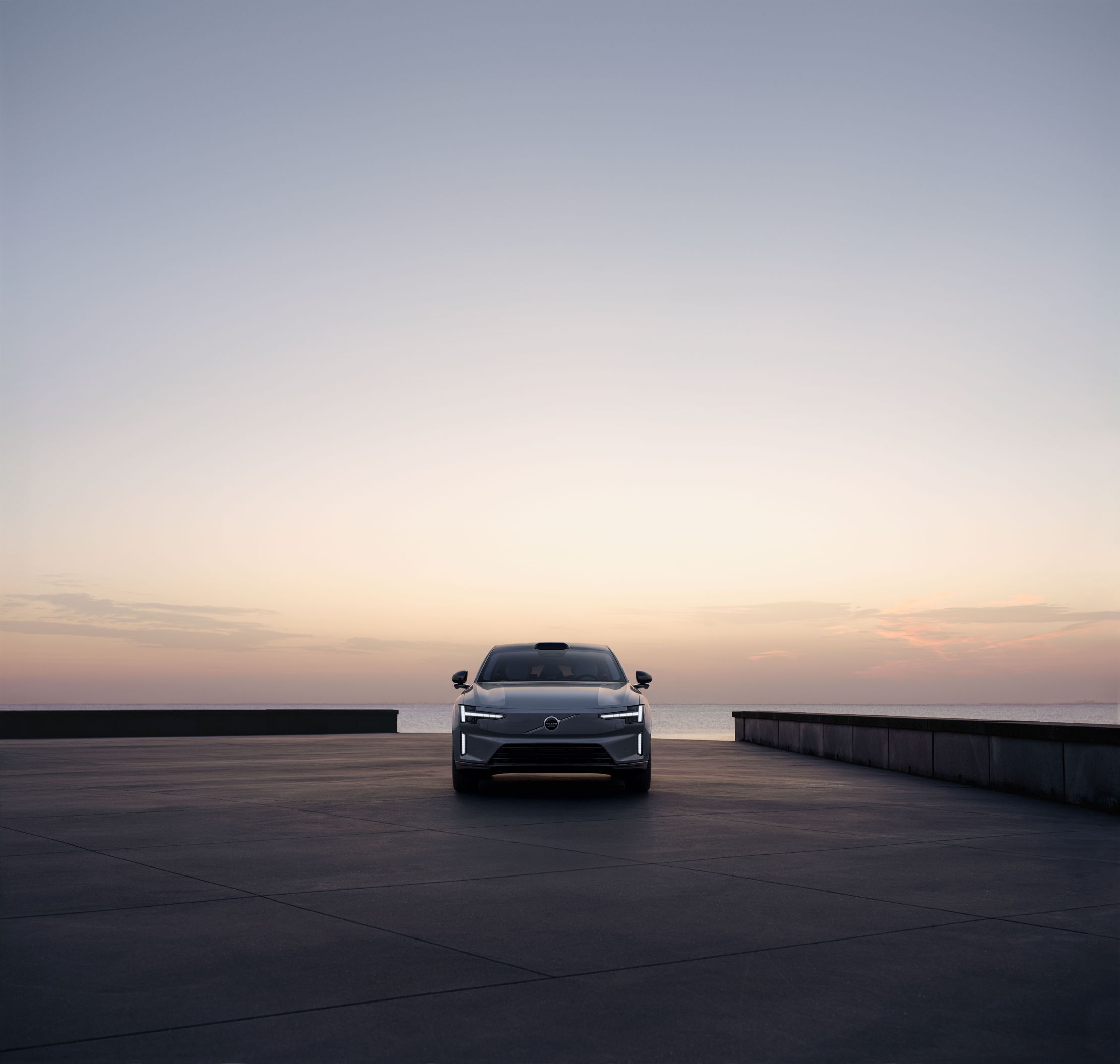If the Volvo ES90 is the answer, what is the question?
Volvo's latest luxury saloon car impresses in unexciting ways, with an unwavering commitment to safety and comfort.


Safety is a double-edged sword, especially when it comes to the Volvo. At a startlingly trendy event on the edge of Stockholm, sandwiched between the uplifting pop musings of Little Dragon, the covers came up on the ES90, Volvo’s latest flagship executive saloon car. Everything looks as it should. The lines sweep in the right way, the wheels are the right size, the front looks both suitably Volvo and futuristic. It is the latest Volvo, but is also undoubtedly a Volvo.
The figures touted are beyond impressive. An enormous 435-mile range on a full charge. On the twin-motor version, 186 miles of range added in 10 minutes. The interior is sumptuously kitted out, with four enormous seats that could comfortably fit the aspiring two-metre tall motoring journalist. 25 Bowers and Wilkins speakers, an electro-chromatic roof, a vast central infotainment screen and very few buttons. The materials are sustainably sourced and nice to touch.
The whole package is luxury almost beyond comprehension. But Volvos are not designed to be luxurious, they are designed to be safe. During the reveal, we watch videos of the ES90 being ruthlessly smashed to bits during testing, with airbags exploding everywhere and various crash-test dummies breathing sighs of relief. But, in 2025, safety is more than just crumple zones and airbags. As Volvo tells us, the safest accident is one that never happens in the first place.





Technology is the new frontier, and Volvo is happily leading the charge in the ES90. Cameras, radars and LiDAR all feature on the new car (although the LiDAR scoop on the roof disappointingly juts out and somewhat disturbs the natural curves of the car when viewed side on), analysing and interpreting the world around you as you go. Not just an extra pair of eyes, but an extra pair of eyes strapped to lots and lots of computers.
As Alwin Bakkenes, Volvo’s head of software engineering told Forbes, ‘this is the most powerful Volvo to date from a computational perspective’. Not only is it smart, it can also learn, meaning the more you drive it, perhaps the safer it gets. ‘Our customers expect us to provide them the safest experience out there’, adds Alwin.
Volvo’s commitment to safety has been admirable. From the three-point seatbelt to now, the brand is all about protection. When talking to Nicole Melillo Shaw, Volvo UK’s managing director, she speaks of her background in family brands and heritage. It was perhaps surprising for someone outside of the automotive world to come in and take over, but it was all about finding a fresh perspective.
Car people, and I am one, can get bogged down in technical statistics and designs and speed and power. But that is not necessarily what most people use cars for. ‘I felt I could represent the layperson, because there’s a lot of language and assumptions [in the business] that people understand what everyone is talking about’.
Exquisite houses, the beauty of Nature, and how to get the most from your life, straight to your inbox.
She says that she was happy to have the honest conversations about why people buy cars and what they use them for. And if the ES90 is the outcome, then those conversations would be to get from A to B, in comfort, quietly and sustainably. But more than anything, they want to get there safely.
Volvo ES90: First Glance
Pros:
Outstanding potential range and charging speeds
Fantastic and comfortable interior, terrific soundsystem
Lots of sustainable materials
Sleek, elegant, unassuming look
Cons:
LiDAR bump on the roof is slightly reminiscent of a taxi.
Car is quite big for a 4-door saloon
Boot space could be a little bigger
Other info:
Available to order now. First deliveries in the UK expected early 2026. Prices from £69,650
But safety can also mean more than walking away from an accident, or not having one in the first place. It can also mean not taking risks, not rustling any feathers, not shaking any trees. The ES90 looks like a Volvo, it smells like a Volvo and it will probably drive like a Volvo. It is, and will be, a very safe car, by both definitions of the word. And that is a good thing.
It’s good because the automotive landscape is changing. There are more electric cars on the road than ever, and those cars are bigger and heavier than ever. They are also a lot more powerful than the average driver is likely used to. 20 years ago, it would be very difficult and expensive to purchase a car that could get from 0-60mph in less than five seconds. In 2025, it will cost you about £70,000. Without a counterbalance, this will cause accidents. Safety will be key. Safety not just for drivers and passengers, but the people around them.
To most people, cars are tools that allow them to travel, to go to work, to visit their family and friends. Even if they do not care about cars, those peope deserve to have good ones. And at first impressions, the ES90 will be a very good car.

Nicole is right to point out that car companies like Volvo need to think about the average consumer first. And the average consumer seems to agree, with Volvo posting a second consecutive year of record sales. They trust them to do what they say they will do. They trust them to be safe, and because they are safe.
If the Volvo ES90 is the answer, then what is the question? It must surely be: is boring bad? For Volvo, the answer is an unequivocal no. Quite the opposite. Safety is style. Safety is cool. Safety is what people want. And they are happy to give it to them.

James Fisher is the Digital Commissioning Editor of Country Life. He writes about motoring, travel and things that upset him. He lives in London. He wants to publish good stories, so you should email him.